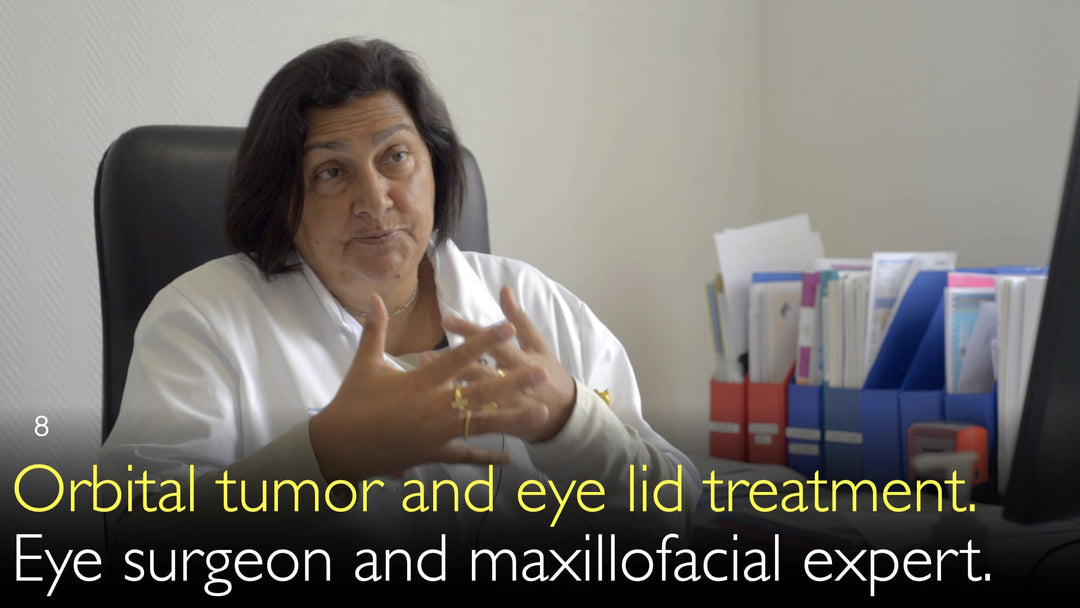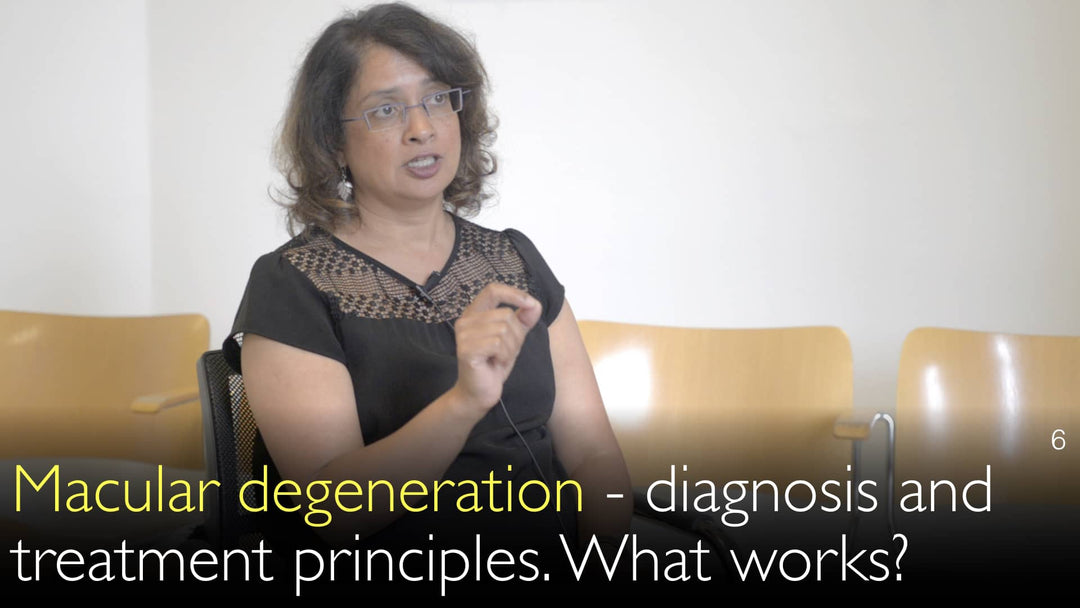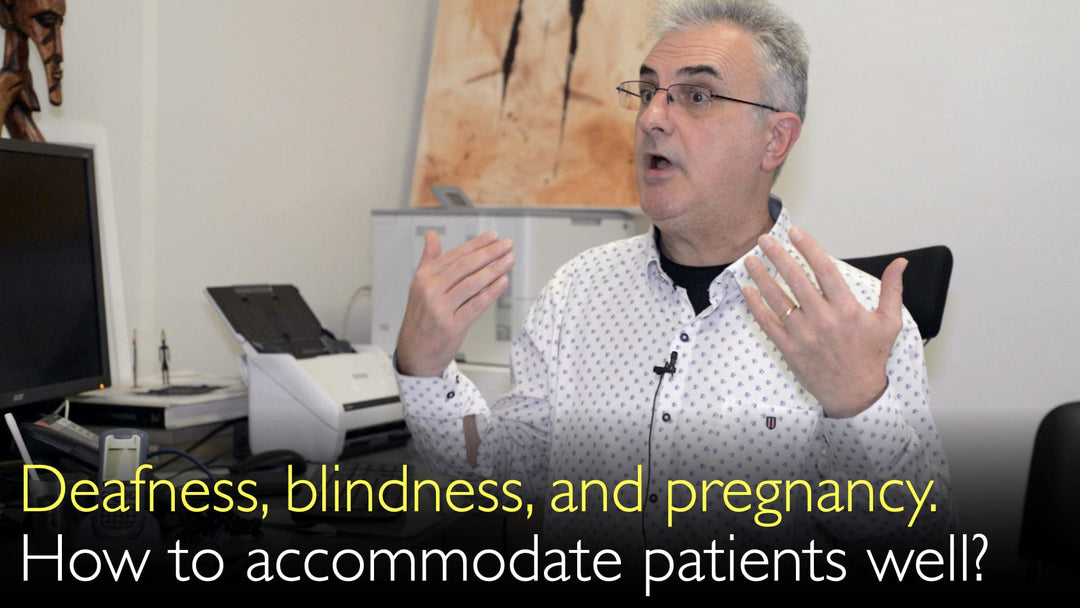Leading expert in ophthalmology and maxillofacial surgery, Dr. Dominique Bremond-Gignac, MD, explains how a multidisciplinary surgical approach is critical for treating complex orbital tumors and eyelid conditions. She details the collaborative techniques between eye surgeons and neurosurgeons that enable safer, more complete tumor resection by accessing growths from multiple angles, significantly improving patient outcomes in delicate anatomical areas.
Multidisciplinary Surgical Treatment for Orbital Tumors and Eyelid Diseases
Jump To Section
- Combined Surgical Expertise in Eye and Face
- Orbital Tumor Diagnosis and Surgical Treatment
- Eyelid Disease and Orbital Malformation Management
- Dual Surgical Team Approach with Neurosurgery
- Advanced Surgical Access Techniques for Tumor Resection
- Benefits of Multidisciplinary Ocular Care
- Full Transcript
Combined Surgical Expertise in Eye and Face
Dr. Dominique Bremond-Gignac, MD, possesses a rare dual specialization in ophthalmology and maxillofacial surgery, creating a unique expertise for treating complex conditions affecting the eye and surrounding structures. This combined training is essential because ophthalmology extends beyond the eyeball itself to include the orbit, eyelids, and adjacent facial anatomy. The overlap between these surgical disciplines is most critical when addressing pathologies that involve both functional vision and structural integrity of the facial skeleton.
This integrated approach allows Dr. Bremond-Gignac to manage conditions that would typically require separate surgical teams, ensuring continuity of care and comprehensive treatment planning. The anatomical complexity of the orbital region demands precise understanding of both ocular function and maxillofacial architecture, making this dual expertise particularly valuable for patients with complex presentations.
Orbital Tumor Diagnosis and Surgical Treatment
Orbital tumors represent one of the most challenging conditions that benefit from combined ophthalmological and maxillofacial expertise. These growths can originate from various tissues within the orbit, including the optic nerve, lacrimal gland, orbital bones, or surrounding connective tissues. Diagnosis typically involves advanced imaging techniques such as MRI and CT scans to determine the tumor's size, location, and relationship to critical structures like the optic nerve and extraocular muscles.
Dr. Dominique Bremond-Gignac, MD, emphasizes that surgical planning for orbital tumors requires meticulous assessment of both functional visual outcomes and cosmetic results. The proximity to vital neurological and vascular structures necessitates approaches that minimize damage to healthy tissue while ensuring complete tumor resection when possible. Treatment decisions are made through multidisciplinary tumor boards that consider whether surgical intervention, radiation therapy, or a combination approach will yield the best outcomes for each specific case.
Eyelid Disease and Orbital Malformation Management
Eyelid disorders and orbital malformations constitute another area where combined surgical expertise proves invaluable. Conditions such as congenital ptosis, eyelid retraction, traumatic eyelid injuries, and orbital fractures require reconstruction that addresses both functional visual requirements and aesthetic concerns. Dr. Bremond-Gignac's background enables her to perform procedures that restore proper eyelid function while maintaining facial symmetry and appearance.
Orbital malformations, whether congenital or acquired through trauma, often involve complex reconstruction of the bony orbit to protect the eye and restore proper ocular positioning. These procedures may involve orbital implants, bone grafts, or custom prosthetic materials to recreate the natural orbital architecture. The goal is always to preserve vision while achieving the best possible functional and cosmetic outcome for the patient.
Dual Surgical Team Approach with Neurosurgery
The most complex orbital tumors often require collaboration with neurosurgeons, creating a powerful surgical alliance that addresses tumors extending into both orbital and intracranial compartments. Dr. Dominique Bremond-Gignac, MD, explains that some orbital tumors are not fully accessible through either purely ophthalmological or neurosurgical approaches alone. These cases benefit tremendously from coordinated surgery where both specialties work simultaneously or sequentially to achieve complete tumor resection.
This collaborative approach allows surgeons to address tumors that might otherwise be considered inoperable or too risky for single-specialty intervention. The combined expertise reduces surgical risk and improves the likelihood of successful tumor removal while preserving neurological function and vision. During the interview with Dr. Anton Titov, MD, Dr. Bremond-Gignac emphasized that this teamwork represents the gold standard for managing complex skull base tumors with orbital involvement.
Advanced Surgical Access Techniques for Tumor Resection
The technical execution of combined orbital surgery involves sophisticated access techniques that enable surgeons to reach tumors from multiple directions. Dr. Bremond-Gignac describes how she might approach a tumor by carefully displacing extraocular muscles to create a surgical corridor, while a neurosurgeon colleague simultaneously accesses the growth through a bicoronal incision. This dual approach provides circumferential access to the tumor, allowing for more controlled dissection and complete removal.
This technique of approaching tumors from two sides simultaneously provides significant advantages. It allows surgeons to "relax" the tumor by releasing its attachments from multiple directions, making resection safer and more complete. The reduced tension on surrounding tissues decreases the risk of damage to critical structures like the optic nerve, blood vessels, and cranial nerves. This method represents a significant advancement over traditional single-approach techniques for complex orbital oncology cases.
Benefits of Multidisciplinary Ocular Care
The multidisciplinary approach to orbital and eyelid conditions offers numerous benefits for patient outcomes. Combining expertise from ophthalmology, maxillofacial surgery, and neurosurgery ensures comprehensive evaluation and treatment planning that addresses all aspects of complex conditions. Patients receive care that considers both immediate therapeutic goals and long-term quality of life factors, including visual function, facial appearance, and overall neurological health.
Dr. Dominique Bremond-Gignac, MD, stresses that this collaborative model represents the future of complex orbital care. During her discussion with Dr. Anton Titov, MD, she highlighted how technological advances and improved surgical techniques continue to expand what's possible for patients with challenging orbital pathologies. The ongoing development of minimally invasive approaches and enhanced imaging guidance continues to improve safety and outcomes for these delicate procedures.
Full Transcript
Dr. Anton Titov, MD: You are a double-trained expert in maxillofacial surgery and ophthalmology, eye diseases diagnosis, and treatment. Where does maxillofacial surgery overlap with ophthalmology?
What eye diseases require a double combination of maxillofacial surgery and ophthalmology?
Dr. Dominique Bremond-Gignac, MD: It could be difficult to understand why maxillofacial surgery and eye surgery could be used together. Of course, in ophthalmology, there is the eye. But there is not only the eye, because there is the orbit, but also eyelids. And so we need to cure problems in orbit and eyelids also.
When you get to maxillofacial surgery, you can combine this expertise, for instance, in orbital tumors, orbital dislocation, orbital malformation. That's why this double training is useful for the ophthalmologist who is also an ocular plastic surgeon.
Sometimes also we perform surgery with the neurosurgeons. We do surgery for orbital tumors. But sometimes, the orbital tumor is not accessible to the ophthalmologist, and the tumor is not accessible enough also for the neurosurgeon. So we can combine indirectly surgical methods with double surgical teams.
For instance, we have some intraocular tumors. So I can go by just opening the surgical area, by taking off the muscles, and I can debulk the tumor. And the neurosurgeon can make a bicoronal incision. And so surgeons can go into this opening. And so we can access the tumor from two sides.
When we go into the tumor from two sides, we can resect the tumors much more easily because the tumor is just relaxed everywhere. So that's why it's interesting to have this surgical approach by two specialties that can be combined.
It speaks to the complexity of the anatomical area around the eye. It also tells how subtle and how delicate that ocular area is. It requires a multidisciplinary approach to the treatment of complicated eye diseases, including orbital tumors.







